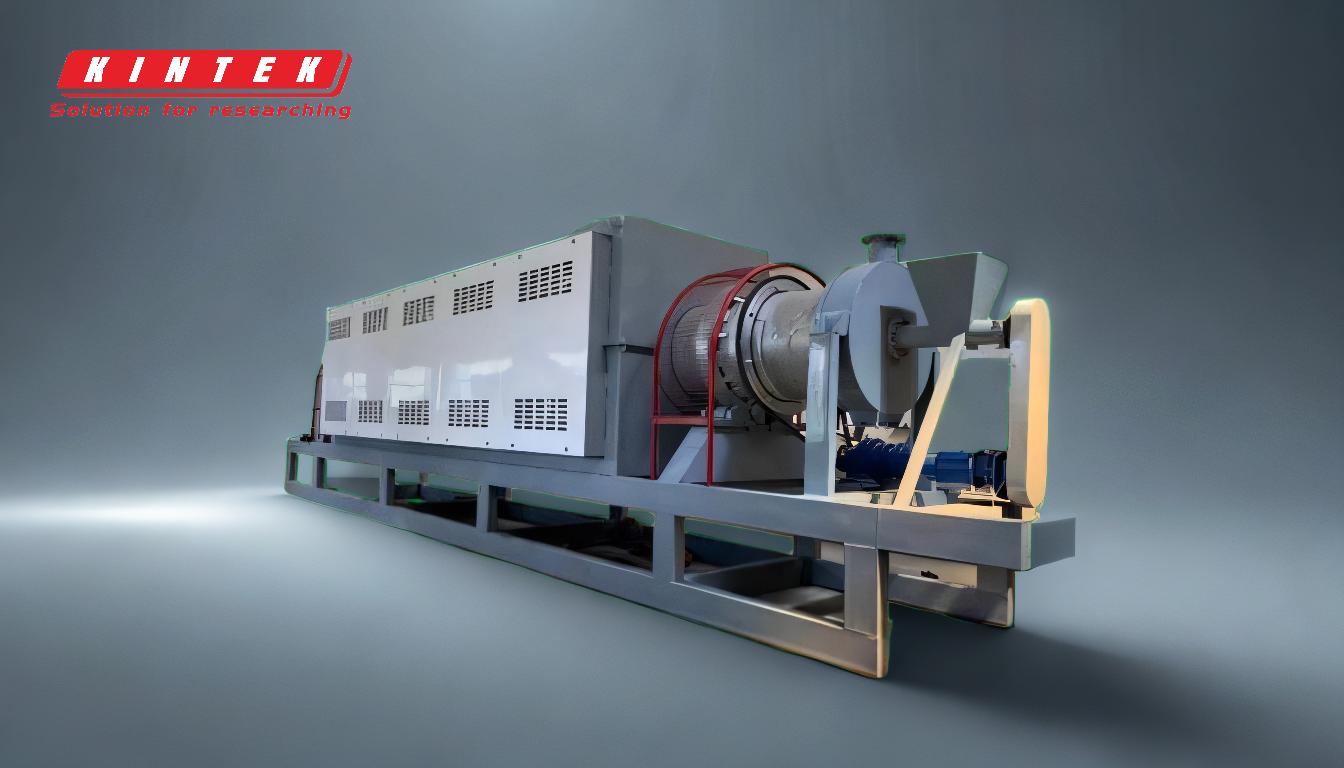Pyrolysis is indeed considered an advanced recycling method due to its efficiency, versatility, and environmental benefits. It involves the thermal decomposition of organic materials, such as plastics and biomass, in the absence of oxygen, converting them into valuable products like oil, syngas, and biochar. This process minimizes pollution and offers a sustainable solution for waste management and energy production. Pyrolysis reactors are advanced machines that enable clean and efficient recycling, making them a key technology in modern recycling efforts. The method is gaining traction as a profitable and eco-friendly alternative to traditional recycling techniques.
Key Points Explained:

-
Definition and Process of Pyrolysis:
- Pyrolysis is a thermal degradation process that breaks down organic materials, such as plastics and biomass, in the absence of oxygen.
- This process occurs at high temperatures and converts the materials into reusable forms like oil, syngas, and biochar.
- The absence of oxygen prevents combustion, reducing harmful emissions and making the process cleaner compared to incineration or landfill disposal.
-
Types of Materials Processed:
- Plastics: Pyrolysis can thermally degrade plastics into oil, which can be used as fuel or further refined into other products.
- Biomass: Materials like wood, bamboo, coconut shells, rice hulls, and garden waste can be converted into biochar or syngas, offering sustainable energy solutions.
-
Environmental Benefits:
- Minimal Pollution: Pyrolysis produces fewer pollutants compared to traditional recycling methods like incineration or mechanical recycling.
- Reduction in Landfill Waste: By converting waste into usable products, pyrolysis reduces the volume of waste sent to landfills.
- Carbon Neutrality: Biomass pyrolysis, in particular, contributes to carbon neutrality by converting waste into biochar, which can sequester carbon and improve soil health.
-
Economic Viability:
- Energy Production: The syngas and oil produced through pyrolysis can be used as fuel, providing a renewable energy source.
- Market Demand: Biochar and other pyrolysis byproducts are increasingly in demand, especially in industries focused on sustainability and carbon offsetting.
- Investment Opportunities: The growing interest in sustainable waste management and energy production has made pyrolysis a profitable option for investors.
-
Comparison to Traditional Recycling Methods:
- Efficiency: Pyrolysis is more efficient in breaking down complex materials like mixed plastics and biomass compared to mechanical recycling.
- Versatility: Unlike traditional recycling, which often requires sorted and clean materials, pyrolysis can handle mixed and contaminated waste streams.
- Cleaner Output: Pyrolysis produces fewer harmful byproducts, making it a more environmentally friendly option.
-
Applications in Modern Recycling:
- Plastic Recycling: Pyrolysis is increasingly used to recycle plastic waste, especially in regions where traditional recycling infrastructure is lacking.
- Biomass Waste Management: Pyrolysis plants are being deployed to manage agricultural and forestry waste, converting it into biochar and energy.
- Carbon Sink Industry: Biochar produced through pyrolysis is gaining attention for its role in carbon sequestration and soil improvement.
-
Challenges and Future Prospects:
- Technological Advancements: Ongoing research aims to improve the efficiency and scalability of pyrolysis reactors.
- Regulatory Support: Governments and organizations are beginning to recognize the potential of pyrolysis and are implementing policies to support its adoption.
- Public Awareness: Increasing awareness about the environmental and economic benefits of pyrolysis is driving its adoption in both developed and developing regions.
In conclusion, pyrolysis is an advanced recycling method that offers significant environmental and economic benefits. Its ability to process a wide range of materials with minimal pollution makes it a key technology in modern recycling efforts. As the world continues to seek sustainable solutions for waste management and energy production, pyrolysis is poised to play an increasingly important role.
Summary Table:
| Aspect | Details |
|---|---|
| Process | Thermal decomposition of organic materials in the absence of oxygen. |
| Outputs | Oil, syngas, biochar. |
| Materials Processed | Plastics, biomass (wood, bamboo, coconut shells, etc.). |
| Environmental Benefits | Minimal pollution, reduced landfill waste, carbon neutrality. |
| Economic Benefits | Renewable energy production, market demand for byproducts, investment opportunities. |
| Applications | Plastic recycling, biomass waste management, carbon sequestration. |
| Challenges | Technological advancements, regulatory support, public awareness. |
Ready to explore how pyrolysis can revolutionize your waste management? Contact us today to learn more!









